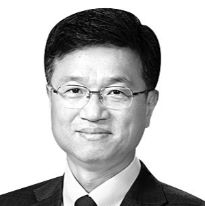No quick fix for manpower shortage
이 글자크기로 변경됩니다.
(예시) 가장 빠른 뉴스가 있고 다양한 정보, 쌍방향 소통이 숨쉬는 다음뉴스를 만나보세요. 다음뉴스는 국내외 주요이슈와 실시간 속보, 문화생활 및 다양한 분야의 뉴스를 입체적으로 전달하고 있습니다.

Seo Seung-woo
The author, a professor of electrical and computer engineering at Seoul National University, is president of the Institute of Electronics and Information Engineers.
The global race for semiconductor primacy affects the establishment of departments related to semiconductors at Korean universities. The Yoon Suk-yeol administration recently announced a plan to educate 3,000 post-graduate professionals specializing in semiconductors in the next five years at the four major science and technology institutes. Given the importance of the semiconductor industry, that number is not enough.
From a macroscopic view, nurturing a workforce in one specific field inevitably leads to a shortage of manpower in other fields due to the low birthrate in Korean society. It is the balloon effect in the zero-sum game. Taiwan, Korea’s rival in semiconductors, has world-class competitiveness because of its unique reality of having few industries and talents other than in semiconductors. Korea has many other world-class industrial fields such as batteries, biotech, automobiles, shipbuilding and petrochemicals.
Regardless of the field, industries are struggling with a chronic shortage of technical manpower. Large enterprises constantly hire new talent to launch new projects and secure global competitiveness, and platform companies that have rapidly grown over the past few years use their market dominance and overflowing funds to attract IT talent like a black hole. Still, supply cannot meet demand.
Companies not included in this flow — and traditional small and mid-sized companies in charge of more than 90 percent of the employment — cannot venture into new businesses due to shortages of workforce. Especially AI, big data, robot and semiconductor industries have a major ripple effect on industries in general, but filling necessary positions with those who completed the regular educational programs is not enough.
Considering the reality, the existing technological workforce strategy cannot meet the ever-changing demands of industry when the population decreases. Government-funded programs aimed at training the workforce are temporary measures to address workforce shortage in certain fields. They are not very effective as there is a four- to five-year gap in catching up with fast changes on the technology front.
We need to expand the talent pool of the potential technology workforce. We need a fundamental plan to quickly train a workforce for those areas with surging demand through a minimum re-education.
For this, universities should not only admit students by departments but also introduce non-major-based admissions for multidisciplinary education to nurture a potential technology workforce. Instead of admitting and educating students by specific majors, students should be allowed to take a wide range of liberal arts and basic major classes offered by different departments in their first two years. By junior or senior year, students can determine a major and get a bachelor’s degree once they meet graduation requirements. Then, students will have enhanced understanding and converging skills on different technologies.
The strategy for nurturing industrial talent should be reinforced by expanding the potential technical workforce pool. Industrial fields require a workforce that can quickly acquire new technologies and develop new products and services. Once the potential technical workforce pool becomes larger, each company can train specialists at a lower cost through customized field training. The government must utilize universities and research institutes to offer systematic and comprehensive ladder programs for job change so that those with other majors can enter into necessary fields.
If we neglect training the technical workforce due to our low birthrate, the top-tier technology competitiveness accumulated by domestic industries will be at risk. I hope the government helps establish multidimensional training programs to prepare for the era of a demographic cliff in the future. Translation by the Korea JoongAng Daily staff.
Copyright © 코리아중앙데일리. 무단전재 및 재배포 금지.
- [CRITICALLY SPEAKING: K-POP] Critic Lim Jin-mo says BTS did great, but could do better
- Netizen punished for malicious posts about IU
- President promises support for nuclear energy industry
- Volkswagen Group Korea names Korean woman as new head of Audi Korea
- BTS was just plain unsustainable
- Korea's 1st monkeypox case flew in from Germany
- After 512 episodes, Yumi and her cells say their final goodbye
- PSY's 'Water Show' to provide 4 waterproof masks to all participants
- [YOUR PLAYLIST] Lapillus is ready to 'Hit Ya!' with its top songs and story leading up to debut
- Dying well doesn't come easy in Korea